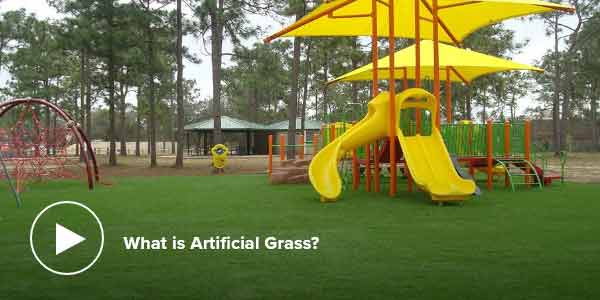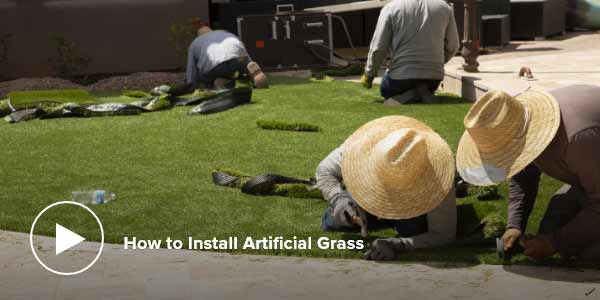How to Choose the Best Putting Green Turf: The Ultimate Guide
In golf, you know that the first swing is crucial, but how much attention are you paying to the final putt? When you’re starting to get serious about your golf game, it’s time for a real putting green – not that cheap green carpet. You need a surface that acts like Bentgrass, where your ball always rolls true.
But how do you find the kind of quality putting green you want? What should you look for?
You might not know how to buy putting green turf yet, but don’t worry. You’re about to become an expert. This guide will walk you through the putting green turf essentials, including the different types, pros and cons, the best putting green turf options, and all the important accessories you need to succeed.
It’s time to get your short game up to par.
But how do you find the kind of quality putting green you want? What should you look for?
You might not know how to buy putting green turf yet, but don’t worry. You’re about to become an expert. This guide will walk you through the putting green turf essentials, including the different types, pros and cons, the best putting green turf options, and all the important accessories you need to succeed.
It’s time to get your short game up to par.
What is Putting Green Turf?
Putting green turf is a low pile artificial grass that allows golf balls to roll true. It is made from durable, synthetic fiber materials like nylon, polyethylene, or polypropylene.
It’s different from standard turf because it has a lower pile, meaning it’s not as thick as the artificial grass on your lawn. Because its surface is thinner and the pile is tight, the golf ball can roll and stop like it would on natural Bentgrass.
For a little bit more about what artificial grass even is, take a look at this helpful video.
It’s different from standard turf because it has a lower pile, meaning it’s not as thick as the artificial grass on your lawn. Because its surface is thinner and the pile is tight, the golf ball can roll and stop like it would on natural Bentgrass.
For a little bit more about what artificial grass even is, take a look at this helpful video.
How to Choose the Best Putting Green Turf
When shopping for a putting green, there are a few important factors you need to consider.- Skill level: Do you want a professional level putting green worthy of PGA champions? Or do you just want a fun activity in your backyard? Recreational putting turf is very different from the material a scratch golfer would use.
- Maintenance: Again, this can depend on the level of play you expect. If you’re putting around for fun, maintenance can be as simple as raking dirt and leaves, and occasionally hosing it down. More professional-grade putting green turf needs to be kept groomed and the infill needs to be regularly leveled.
- Stimp/speed: The speed of your ball depends on the stimp reading of the turf. This varies from green to green, but in general, recreational turf is slower than professional turf.
- Price: You need to consider your budget as you plan the size of the putting green and the artificial turf that you want. Putting greens cover a wide price range, so you can find an option that fits your budget.
Putting Green Turf Explained

Now that you know the very basics of putting greens, it’s time to dig into the details. There are a few technical aspects of turf, such as face weight and material, that can affect its performance as a putting green.
Now that you know the very basics of putting greens, it’s time to dig into the details. There are a few technical aspects of turf, such as face weight and material, that can affect its performance as a putting green.
Now that you know the very basics of putting greens, it’s time to dig into the details. There are a few technical aspects of turf, such as face weight and material, that can affect its performance as a putting green.
Putting Green Turf Material
What is artificial turf made of? That depends. There are a few synthetic fibers that are popular for putting green turf, and they all have distinct traits that make them suited to different applications.- Nylon: This material is durable and can withstand high-traction applications. It’s fire-resistant as well, making it great for safety in indoor spaces. However, nylon fades and discolors when exposed to too much sunlight, so it shouldn’t be used outside.
- Polypropylene: Unlike nylon, polypropylene won’t fade in the sun. It’s softer and less abrasive than nylon as well, and it can be fire-resistant, though this isn’t always the case.
- Polyethylene: A soft fiber made from recycled plastics, polyethylene is non-abrasive and doesn’t fade in direct sunlight. It’s affordable and ideal for outdoor use in putting greens.
Putting Green Turf Stimp Reading
A stimp reading tells you how fast the ball will roll on putting green. The higher the stimp reading, the faster the ball will roll.Stimp readings can vary depending on the infill and the material that is used. The turf material itself and how it tufts will affect how fast the ball will roll. Infill also helps to add a little more speed. Most of the stimp readings on our putting green turf are a 9 to 11, but this will vary based on the lay of the ground, how much infill you use, and how straight up the grass blades are standing.
If you want the ball to roll slower or faster, there are ways to manipulate your putting green. For example, you could add more infill to increase the speed, or remove it to make the ball go a little bit slower.
Below are the recommended putting green speeds by the USGA and the US Open.
| Slow | Medium | Fast | |
|---|---|---|---|
| USGA Recommended Speed | 4.5’ (1.4m) | 6.5’ (2m) | 8.5’ (2.6m) |
| US Open Recommended Speed | 6.5’ (2m) | 8.5’ (2.6m) | 10.5’ (2m) |
Source: Frank Thomas (October 2001). “Equipment Extra: Eddie Stimpson’s slant on putting”. Golf
Putting Green Turf Face Weight
Face weight measures the weight of the turf per square yard. The higher the face weight, the more material has been used.Typically, more material means a more dense and durable product that can last longer. Putting greens perform best with a face weight between 40 and 60 ounces.
Here are your options:

Putting Green Turf Pile Height
One of the most important qualities of your putting green is the pile height. Pile height is the thickness of your turf.For lawns, a thicker pile high is good, because it’s more comfortable and lush, but that’s the opposite of what you want here. Putting greens should have a low pile height to ensure your ball rolls true. Imagine hacking away in tall grass. No thanks.
Most putting green surfaces are 1/2” thick to 3/4” thick.

Indoor Putting Green vs. Outdoor Putting Green
Before you purchase your putting green, make sure it is suitable for the environment it’ll be in. You’ll be able to tell if a product is suited for indoor or outdoor use by determining the material.Indoor Turf
Indoor putting green turf is typically going to be made from nylon, which can withstand high traction, and also offers some safety benefits with a Class 1 fire rating.The only big downside is that it fades in direct sunlight, so the bright, beautiful green won’t last long outside.
Shop Indoor Putting Green Turf
Outdoor Turf
Outdoor putting green turf is designed to withstand the elements, and won’t fade in the sun. Putting greens made from polypropylene or polyethylene can be installed both indoors and outdoors. While these products aren’t always as fire-resistant as nylon, they’re just as durable.Shop Outdoor Putting Green Turf
Pros and Cons of Putting Green Turf
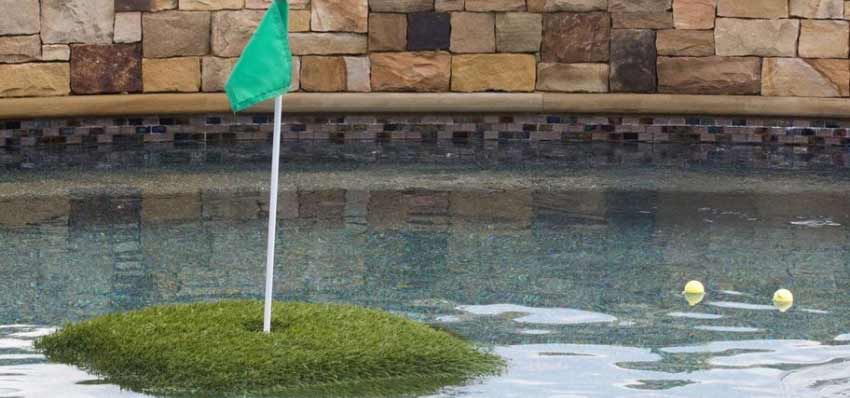
To decide is fake putting green turf is right for you, or if you would prefer natural grass, consider these pros and cons.
Pros of Putting Green Turf
Putting green turf is designed to make your golf game easier, and to help you focus on the fun. Here are some of the many benefits you’ll enjoy from synthetic turf.- Maintenance-Free: One of the best things about artificial grass is that you don’t have to mow or water it. All that labor is gone. You can just golf.
- Forever Green: When you think of golf, you think of rolling green hills. Our putting green stays forever green just like you remember it.
- Great Practice: Perhaps most importantly, you get to practice your short game without leaving your home.
- Great Fun: It’s also fun! Teach your kids how to putt, or just have some friends over. Remember to have fun on your putting green.
- No pests or dirt: Natural grass attracts insects and other pests, which isn’t the case with turf. Synthetic putting greens are also cleaner. You won’t track in dirt or mud after it rains.
Cons of Putting Green Turf
Everything has its limitations, and artificial putting green is no different. Let’s look at some potential hiccups when it comes to buying putting green.- Expense: Buying putting green can have a steep upfront cost, but that also depends on how much space you are dedicating to your golfing zone. Additionally, it lasts for years, so in the long term, it pays for itself.
- Heat: It can get hot out there, and unfortunately outdoor putting green can get a little hot from the sun. Overall, artificial grass is hotter to the touch than real grass.
Types of Putting Green Turf
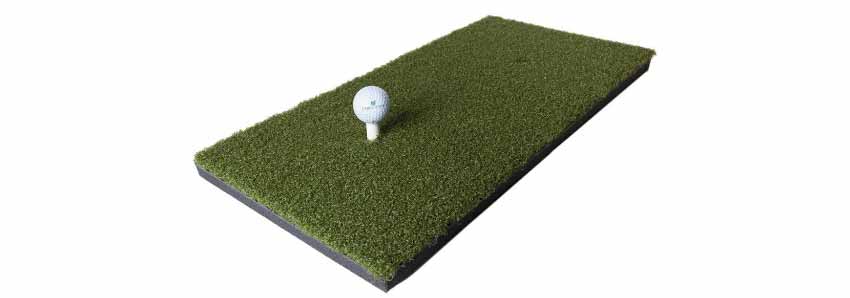
Not all putting greens are the same. Depending on how, and where, you plan to use your turf, one option may be a better fit than others. Learn more about the different types of putting green turf, so you can make an informed decision.
Mats
If you want a realistic playing surface in your yard or rec room, but space is limited, then a putting green mat is the perfect solution. Artificial turf mats provide a practice space that you can use indoors or outdoors, so you can play year-round, regardless of the weather.Shop Putting Green Mats
Rolls
Turf rolls are the most traditional form of artificial putting greens. They cover a larger area than mats, so you have even more room to play. The surface acts just like real grass, so you can be sure that all your putts will roll true.Shop Putting Green Rolls
Tiles
With turf tiles, you can quickly and easily create a practice area for your short game. Since the tiles interlock, it’s simple to remove and store them away if you need to use your space for something else. Turf tile surfaces are made from nylon, which can fade in the sun. That means that turf tiles are only suitable for indoor use.Shop Putting Green Tiles
Best Putting Green Turf Options
Alright, now that you’re ready to choose your putting green, it’s time to discover the best of the best. Here are our customers’ absolute favorite products.
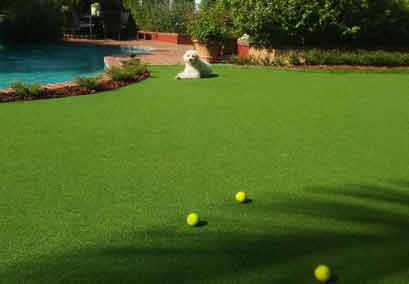
Putting Green Turf Rolls
Putting Green Turf offers the beauty of a manicured putting green at discount prices. This artificial turf roll provides all the realistic play of natural grass with none of the hassle. These turf rolls will allow golf balls to roll true in all weather with no divots or bad lies. Putting Green Turf features a realistic multi-green fiber and is UV Stable and heat/frost resistant.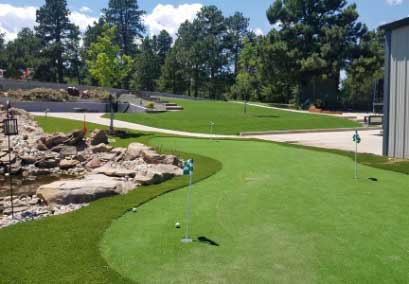
Pro Putt Premium Turf Rolls
Whether you want to add a putting green in your backyard or the golf course, Pro Putt Premium Turf Rolls are the perfect fit. This two-toned turf blend not only looks like real Bentgrass but also performs just as good, if not better. Virtually maintenance-free, this turf will ensure that your balls roll true, no matter the weather.
Premium Putting Green Turf Rolls
This turf roll replicates a natural Bentgrass surface for a quality putting green environment that will last for years to come. The 1/2″ pile height allows you to control the speed of the green and helps with a more realistic action when hitting pitch shots.These rolls work perfectly in both residential and commercial settings. The backing boasts a uniquely formulated polyurethane coating providing greater seam strength and durability. This synthetic putting green also features UV resistance, so the grass blades retain their color in the sun.

Pro Putt Turf Rolls
Pro Putt Turf Rolls have the look and feel of natural Bentgrass without the maintenance time or costs of the real thing. These 1/2” thick rolls provide the ideal surface to practice your putts, allowing you to alter the surface speed so you’re prepared to play under any conditions.
Floating Putting Green Mats
Here’s a unique option that will make practice fun, especially in the summer months! Floating Putting Green Mats feature a premium artificial surface with and without rough. Each mat consists of synthetic grass over a foam backing that allows it to float. The full kit comes with 12 floating golf balls, a 12″ x 24″ hitting mat, a flagpole with a solid green flag, and a 4″ cup.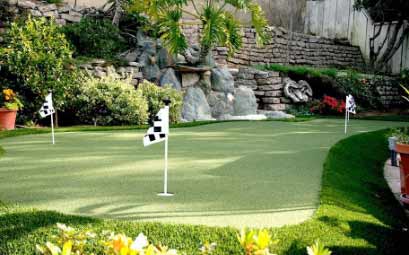
Putting Green Mats
One of the most popular putting green rolls is now available in pre-cut mats for easier installation. Putting Green Mats come in a range of sizes to fit whatever space you’re using. Perfect for residential or commercial applications, these turf mats look, feel, and perform just like real Bentgrass.How to Install Putting Green Turf
Putting green grass is fairly easy to install, and you can make it a DIY project. It saves you some money on installation, and of course, you get the bragging rights to say you did it yourself.
In a few simple steps, you create a putting green in your own backyard. Here’s how:
In a few simple steps, you create a putting green in your own backyard. Here’s how:
- Start by removing the grass and a few inches of topsoil with a shovel.
- Add a layer of compacted pea gravel. You will then spread fine sand on top to make sure the surface is completely smooth for optimal putting. Use a weighted roller on the sand to compact it and make the surface even.
- Roll out the turf over the installation area. If you have multiple rolls, tape or staple the edges together. If you have to have seams, make sure they’re as flat and level as possible so they don’t disrupt your putts.
- Trim the outer edges of the turf and fasten them with nails or staples. As you do so, ensure the turf is stretched out evenly without any ripples or waves.
- Finally, spread putting green infill over the surface to weigh it down. Rake the surface so the blades stand up and create a more natural look.

Putting Green Turf Accessories
No putting green is complete without the right accessories! Finish out your practice space with the tools you need to succeed.- Infill: Infill helps hold your turf down and keeps the blades standing up for a natural look.
- Staples and nails: Nails will hold the edges of the turf down, while staples are great for holding seams together. You’ll need both.
- Cup and flag kit: Put the finishing touch on your new putting green with our Cup and Flag Kit. This kit includes (1) aluminum cup, (1) flag pole, and (1) black and white checkered flag.
How to Clean and Maintain Putting Green Turf
Putting green turf is very low-maintenance compared to a natural green. You don’t have to water it, mow it, or trim any edges! To keep your putting green looking its best, follow these steps:
- Weekly: Rake up any stray leaves or other debris.
- Monthly: If it gets dirty, dusty, or muddy, simply hose it down and leave it to dry.
- If the blades start to look flat: Rake the turf to “bloom” it and make the blades stand up. Add infill if any is lost or washed away.
Putting Green Turf FAQs
Get answers to the most common questions about fake putting green grass with this helpful FAQ!
What type of artificial grass is best for putting greens?
The best artificial putting green turf has a short pile height, because the shorter blades allow your golf ball to roll true like it’s on real Bentgrass. We also recommend artificial grass with a face weight, or density, or 40 – 60 oz. per yard. This ensures the turf is durable and dense enough for a smooth roll.How much does it cost to put a putting green in your backyard?
According to HomeAdvisor, a backyard putting green can cost you “$15 and $40 per square foot” for both the material and a professional installer. If you want to install it yourself, we offer putting green rolls for under $3/sqft. A putting green mat will be a bit more expensive, but installation is more DIY-friendly.How long will fake grass last?
Our most durable artificial putting green turf comes with a 15-year warranty, so you know it can last for more than a decade with proper care and maintenance. To ensure your putting green turf lasts, keep it clean and maintain plenty of infill to protect the blades from being flattened down.How do you slow down an artificial putting green?
If you want a slower speed for your putting green, you can start by removing some of the infill. With less infill, the golf ball has to roll over more of the grass, which will cause friction and slow it down. You can also rake the turf to make the blades stand up taller, and this will have a similar effect.How do you speed up an artificial putting green?
To speed up your putting green, you can add more infill to your turf. More infill covers more of the grass blades, so the golf ball doesn’t experience as much friction as it rolls.Conclusion
Alright, now that you know everything you need to know about putting green, it’s time to set up your own putting paradise and get swinging. You’re on your way to your perfect game.


